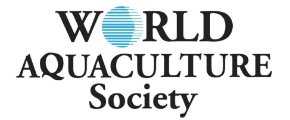Asian Sea bass GROWTH performance USING A CAGE-IN-POND ProDUCTION APPROACH with soy-optimized diets in A fresh water ENVIRONMENT IN VIETNAM
A feeding demonstration was conducted by the U.S.Soybean Export Council (USSEC) Soy-In-Aquaculture (SIA) program in Vietnam to show the potential for Asian sea bass (Lates calcarifer) production in cages placed in former Pangasius freshwater ponds. This example was targeted for farmers in the Mekong delta provinces to show them ways to diversify their production approaches from traditional methods. For this demonstration an experimental farm in southern Vietnam was used to evaluate the use of extruded floating feeds with satiation feeding management using the principles of Low Volume High Density (LVHD) cage culture in an earthen pond environment.
The objectives of this cage-in-pond aquaculture production technology aimed to evaluate the growth performance of Asian Sea bass in fresh water with a soy-optimized diet, maximizing cage production through the use of proper cage positioning, optimum cage volumes and harvest densities.
Five 2.5 x 2.5 x 2.5-m (15.6-m3) floating net cages were deployed in 0.5-ha earthen pond for this feeding demonstration. The pond was equipped with aeration at opposite sides of the pond to create circulation and provide aeration. Demonstration cages were each stocked with about 540 Asian sea bass (13g average size).
A soy-optimized 47/12 (percent crude protein/percent crude lipid) floating extruded diet was produced for the demonstration. Protein in the diet was 18.7% soybean meal + 31.8% fish meal. Fish were given three feedings per day using the USSEC 90% satiation feeding method with a five day satiation setting interval.
The study was completed at end of October 2014 and the fish completely inventoried. At 96 DOC the average body weight was 132.5 g and the average cumulative FCR was determined to be 1.25. Fish survival rate was 94.3%. The results indicated Asian sea bass fed on soy optimized diets showed good growth performance, and that the Asian sea bass were able to be cultured in cages in freshwater ponds. These advanced fingerlings were then restocked for a planned second phase to determine the suitability of growing the fish to market size in the same system.













